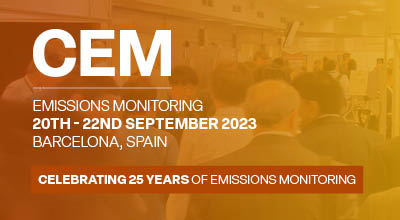

Bureau Veritas, has welcomed the publication of the new World Health Organisation (WHO) Air Quality Guidelines (AQGs) and the recommendations around global air quality levels, hailing the new guidelines as ‘necessary’ in reducing air pollutants, and the associated risk to public health.
Following the publication of the new guidelines, which were announced last week, Bureau Veritas is calling on the instrument technology sector for clearer advances in air pollution measurement methods, or risk not being able to evidence improvements made in reducing air pollutants against more stringent levels.
The new AQGs provide clear evidence of the damage air pollution inflicts on human health. Since WHO’s last global update in 2005, there has been a marked increase of evidence on how air pollution affects different aspects of health, which has resulted in recommendations for reduced air quality levels a range of pollutants, including particulate matter (PM), ozone (O3), nitrogen dioxide (NO2‚‚) sulfur dioxide (SO2‚‚) and carbon monoxide (CO).
Dr Richard Maggs, Head of Environment & Sustainability at Bureau Veritas, said: “The update to the WHO Air Quality Guidelines has come as no surprise in relation to the tightening of health-effects thresholds for almost all pollutants which arise from fossil fuels. Since the last report was published in 2005, we’ve seen a marked increase in studies linking adverse health impacts with air pollutants – so setting out revised guidelines is absolutely essential in reducing levels of pollutants if we are to make an impact on the threat to human health.”
Monitoring of air pollution is typically used by many countries around the world to provide evidence on the success of policy measures. The technologies used to measure pollutants and the principles of operation of such instruments are well established, alongside the extent to which uncertainty and bias arise within the measurement methods.
Dr Richard Maggs continued: “As guidelines change and become more stringent, the extent to which current measurement instruments can adapt to these tightening thresholds is limited. Whilst operational improvements in the day-to-day running of instruments can take place, it’s unlikely that current methods will be able to measure concentrations against lower and lower values – which poses the question of how policy makers are going to evidence improvements made and gain confidence in the data acquired.”
The extent of the challenge very much depends on the pollutant of concern. For gaseous pollutants the chemical composition does not vary across the world but for particulate matter – arguably the pollutant with the biggest health impacts (PM10 and PM2.5) most methods entail the development of complex algorithms in controlled chamber studies or specific particulate laden environments. However, applying a ‘trained PM method’ developed in one environment to another represents a significant challenge and therefore requires more robust and significant trials on performance of particulate matter instruments to achieve the desired confidence in the measurement.
Dr Maggs concluded: “Air pollution is a huge threat to human health, so it’s imperative that we work together if we are to meet the recommended requirements outlined by WHO. Equally, it has a detrimental effect on climate change, so the need for the instrument technology sector to improve measurement methods to ensure we are all to gain confidence in the data on pollutant concentrates acquired around the world has never been more prevalent.”